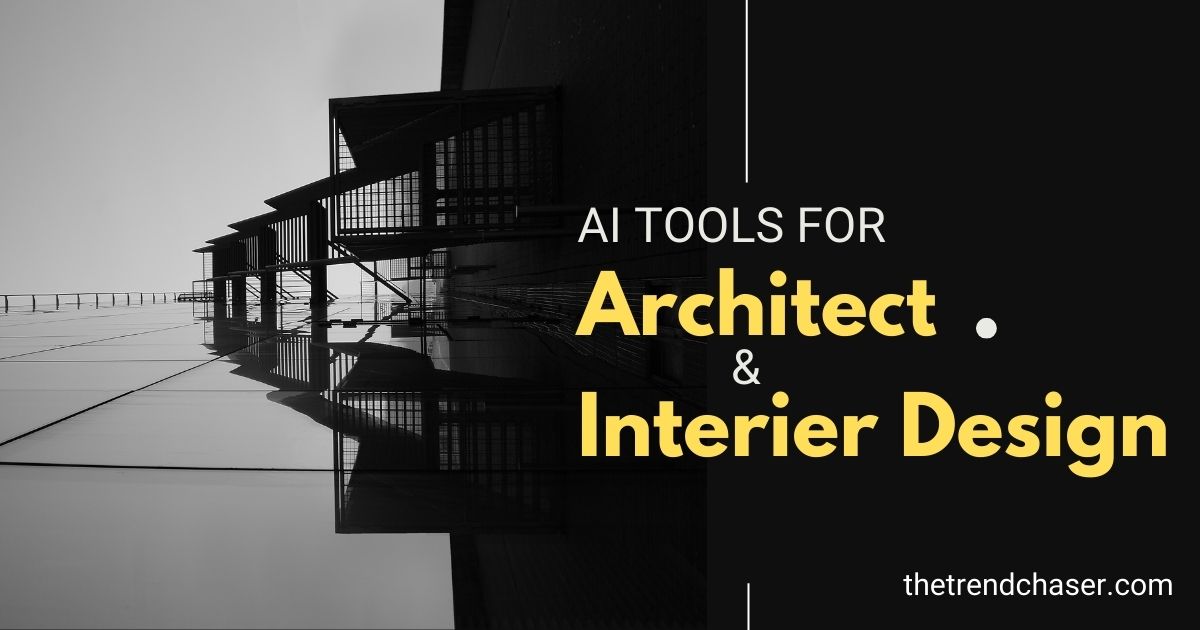
Introduction
In the dynamic world of architecture and interior design, staying ahead of the curve is essential. With the rapid advancement of technology, Artificial Intelligence (AI) has emerged as a game-changer for professionals seeking innovative and efficient solutions. AI tools have transformed the way architects and interior designers approach their professions, from imagining cutting-edge designs to enhancing complex procedures.
In this comprehensive guide, we will unveil the top AI tools that are reshaping the landscape of design, empowering creative minds to unlock unprecedented levels of precision, creativity, and productivity. These tools not only enhance the design process but also offer unique capabilities that cater to the specific needs of architects and interior designers.
Top 7 AI Tools For Architects
1. Luma.AI: Revolutionizing Renovation Projects

Luma.AI emerges as a leader in AI-powered 3D scanning and modeling, transforming the process of making detailed 3D models. This platform creates precise, lifelike 3D models from images using advanced artificial intelligence (AI) methods such as computer vision, deep learning, and generative adversarial networks, providing architects with a holistic perspective of varied items.
Luma.AI surpasses the role of a mere 3D modeler; it stands as a digital reincarnation expert. Its full brilliance shines through in restoration and rehab projects, when it captures existing structures with incredible consistency and makes virtual twins. Architects may imagine the repaired structure long before construction begins by bridging the gap between the tangible and the virtual.
2. Spacio AI
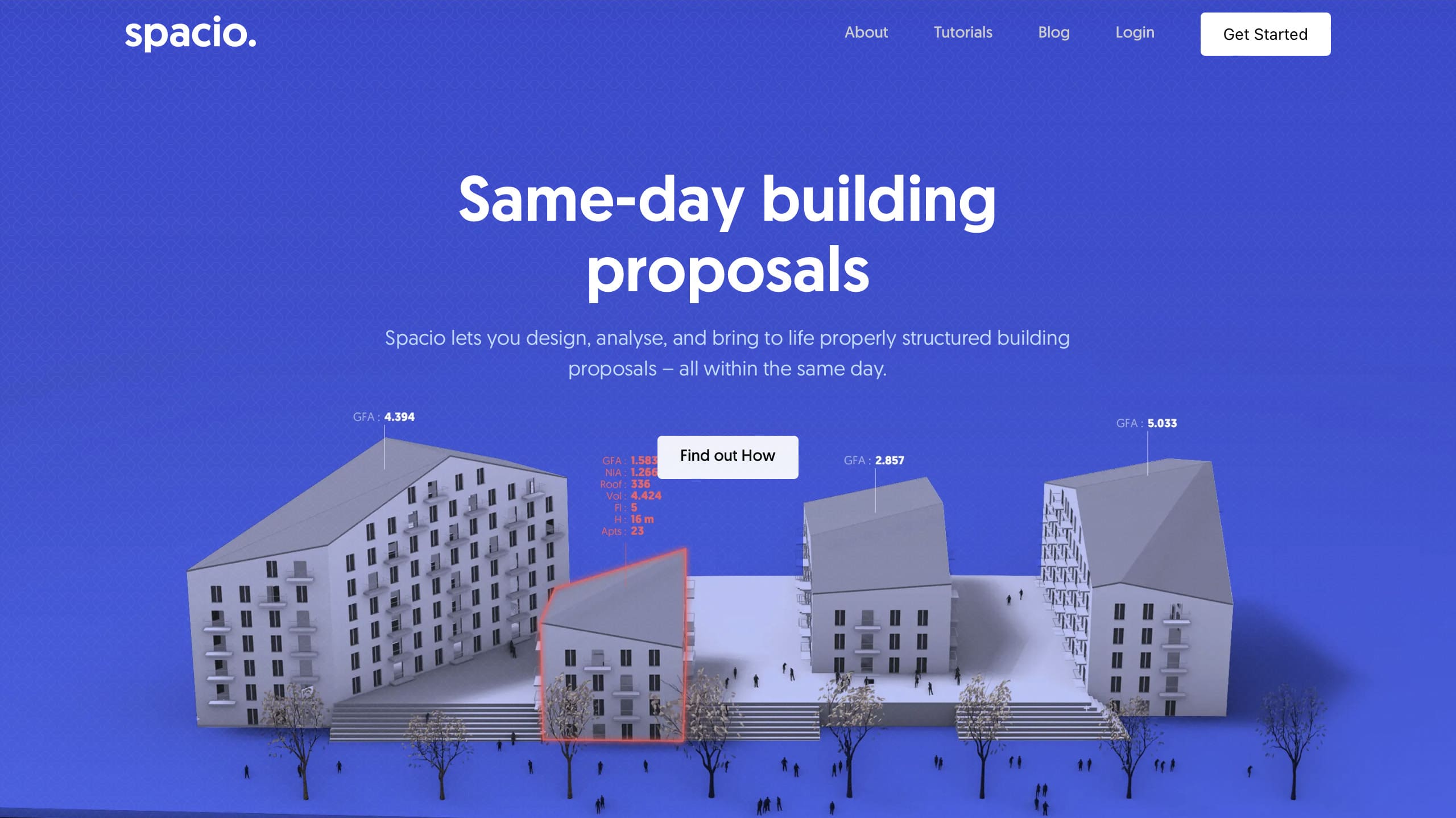
Spacio, a leading AI tool used by architects, engineers, and property developers globally, is changing the game with its ability to design, analyze, and create properly structured building proposals within the same day. This remarkable feature eliminates the long waiting time associated with traditional design processes, allowing professionals to deliver projects faster and more efficiently.
One of the key features of Spacio is its insanely fast and flexible modeling capabilities. By combining the speed of Generative AI with the freedom of free-form editing, architects and interior designers can immediately model projects that align with their vision and maximize the potential of the site. This unique combination allows for quick exploration of design options and efficient decision-making.
Spacio simplifies the initial design phase by providing architects and interior designers with instant access to the surrounding context of their project location. With just a single click, professionals can obtain the necessary site information, enabling them to design buildings that account for real-world site conditions. This feature enhances the accuracy and feasibility of the design, resulting in more successful projects.
Gone are the days of using separate systems, confusing scripts, and clunky workflows. Spacio eliminates these hassles by offering architects and interior designers a unified platform for both design and simulation. By allowing professionals to design and run simulations on their building models in the same place and at the same time, Spacio simplifies the design process and improves overall efficiency.
Building Information Modeling (BIM) is a critical aspect of modern architecture and interior design. Spacio ensures that professionals can create BIM models that consist of structured, connected, and classified elements by default. This feature helps architects and interior designers stay BIM-ready from the very start of their projects, avoiding the need for time-consuming remodelling later on.
3. ArkDesign.ai
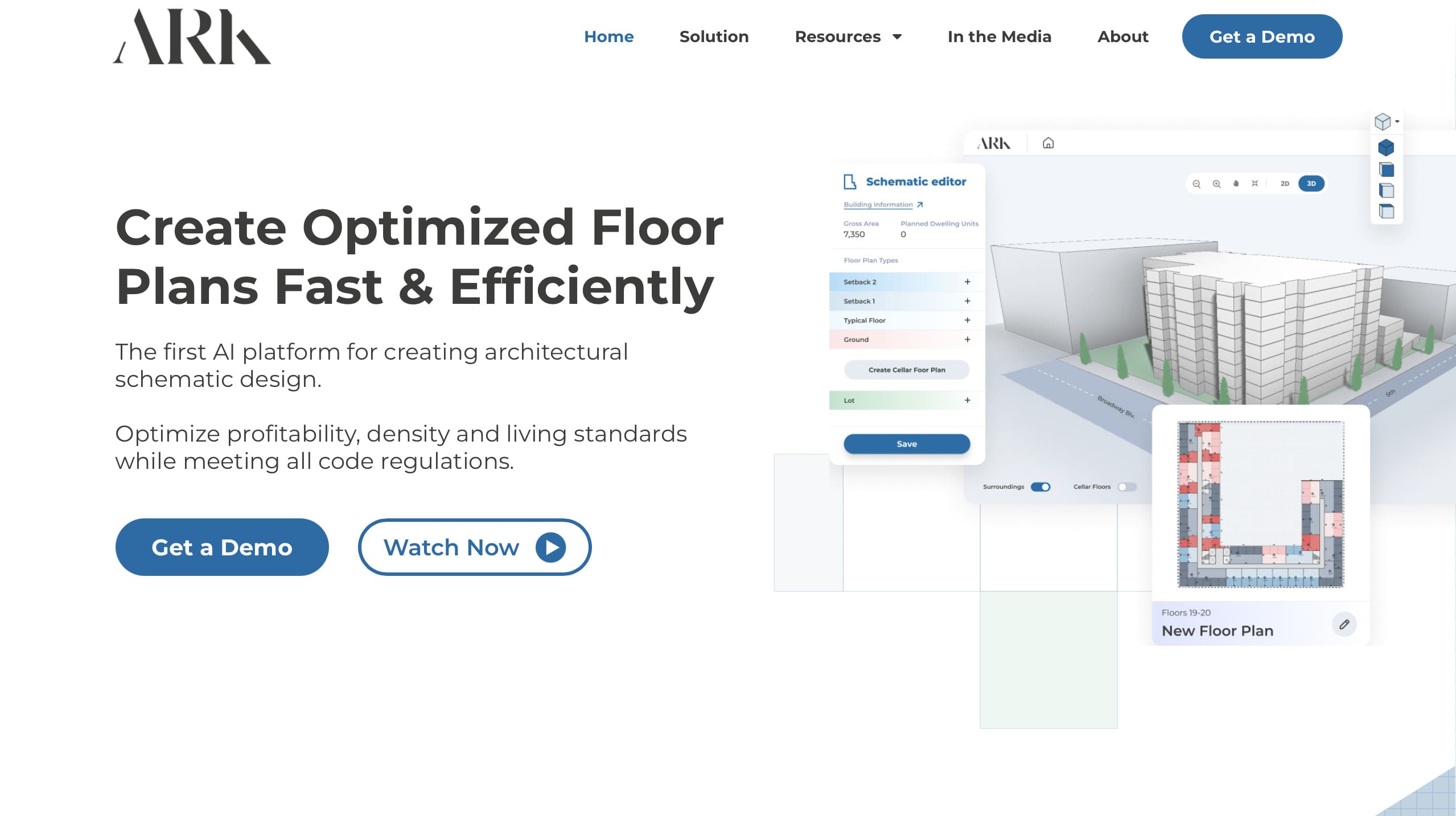
For architects and developers seeking a streamlined design process, ArkDesign.ai offers a revolutionary solution. This intelligent platform swiftly optimizes building designs, empowering users to make well-informed decisions with ease.
ArkDesign.ai’s sophisticated AI brain thoroughly studies and learns from architectural design metadata, generating many variations while adhering to US local norms and ordinances. The end result is a collection of innovative and complying projects with the trademarks of efficiency, quality, and cost-effectiveness.
4. Arko AI

When it comes to rendering, Arko.ai stands out as a trailblazing AI-powered rendering service. This cloud-based platform offers top-notch, photorealistic renders in minutes, transforming 3D models into awe-inspiring visual masterpieces that mimic reality.
Arko.ai enhances the design process for architects by breathing life into 2D sketches and models, transforming them into realistic renders. Aside from its visual excellence, Arko.ai is a time-saving treasure that relieves architects of the onerous work of rendering.
5. Testfit AI
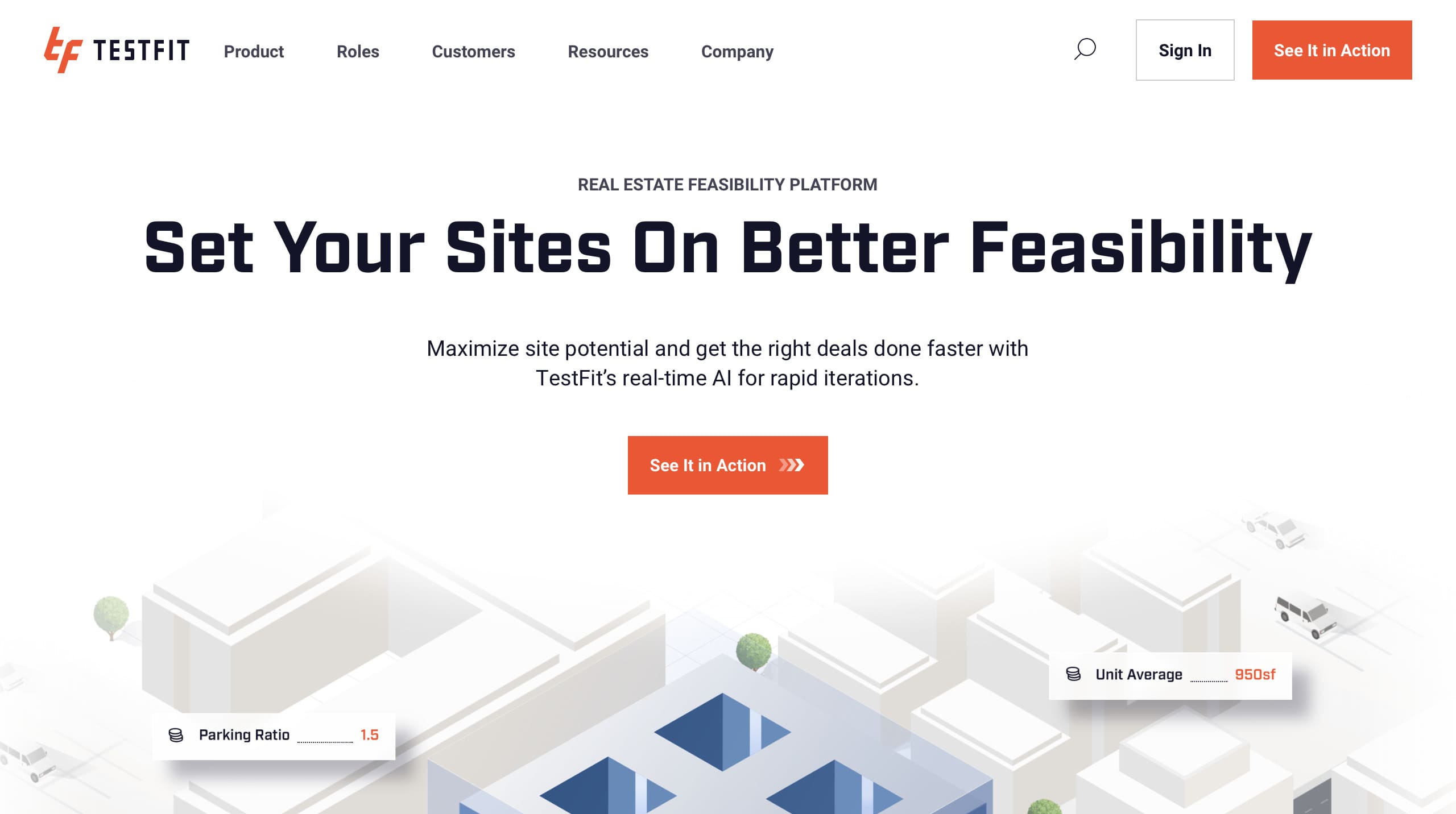
One such AI tool that has been gaining popularity is TestFit. With its real-time AI capabilities, TestFit enables architects and developers to evaluate site feasibility, plan projects in hours, and iterate through design options effortlessly. By harnessing the power of AI, TestFit helps streamline the development process, saving time, reducing costs, and ultimately delivering better results.
TestFit offers a comprehensive workflow that provides real-time insights into design, cost, and constructability, all in one place. By leveraging AI algorithms, architects and developers can quickly evaluate the feasibility of a site, identify potential challenges, and make informed decisions. With TestFit, the days of weeks-long feasibility studies are long gone, as deals can now be evaluated in a matter of hours.
Gone are the days of manually drawing site plans and struggling with complex zoning regulations. With TestFit, architects and developers can select sites quickly from parcel data or draw from metes and bounds. The massing mode allows for the efficient build-out of an entire site, complete with customizable road layouts and built-in topography. Visualizing site plans with 3D context is a breeze, thanks to TestFit’s intuitive interface.
TestFit goes beyond just site planning and design. It also provides architects and developers with the financial data they need to make informed decisions. Automatic costing with accurate quantity takeoffs ensures that cost estimates are precise, while pro forma valuation allows for quick vetting of deals. Architects and developers can compare design schemes instantly, considering all the financial data at their fingertips.
6. Maket AI
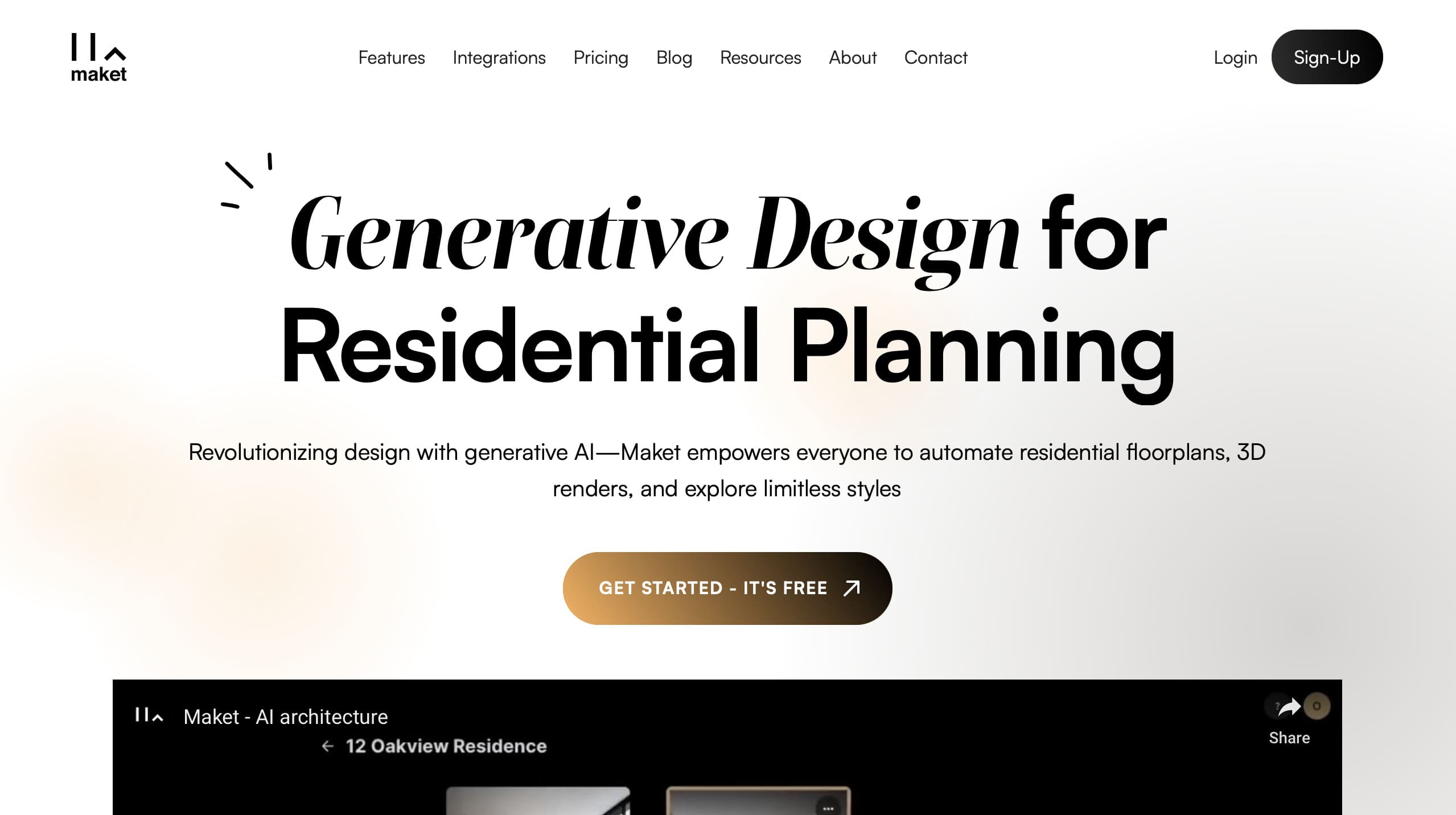
One of the most exciting AI tools for architects is Maket.ai. With the help of this innovative tool, the difficult task of satisfying client-specific criteria and spatial constraints may be transformed into a wealth of varied design exploration. Architects may provide a lavish visual feast of custom design options using Maket.ai.
The real magic of Maket.ai is in its capacity to free up time and resources. Maket.ai frees up architects’ time by taking on the tedious work of creating design possibilities, giving them more time to express their ideas and interact more deeply. With their clients.
7. Autodesk Forma

As a state-of-the-art, comprehensive AI-powered planning tool, Autodesk Forma enables architects and urban planners to create livable, sustainable communities with unmatched accuracy. Operating on a convenient cloud-based platform, Autodesk Forma offers seamless accessibility, seamlessly integrating with AutoCAD and Revit.
This addition to Autodesk’s repertoire harnesses the full potential of AI, simulating the ramifications of diverse design decisions on crucial factors such as energy consumption, traffic flow, and air quality. By providing invaluable insights, Autodesk Forma equips designers to make informed and sustainable choices, elevating the sustainability and livability of their projects.
How to Harness the Power of AI in Architecture and Interior Design
Now that we have explored the top AI tools for architects and interior designers, let’s delve into how you can harness the power of AI to maximize your design potential. These strategies will help you effectively integrate AI tools into your workflow and unlock their full potential.
Start with the Basics
Before diving into advanced AI tools, it’s essential to familiarize yourself with fundamental AI concepts. Take the time to explore online courses, webinars, and workshops that cover the basics of incorporating AI into architecture and interior design.
Provide High-Quality Data
To get the most accurate and efficient results from AI systems, it’s crucial to provide high-quality data. Ensure that your input data is precise, thorough, and updated regularly. This will ensure that your AI tools are working with the most up-to-date information.
Embrace Collaboration and Iteration
AI tools are not meant to replace architects and interior designers but rather to augment their abilities. Embrace collaboration with AI tools, delegating repetitive tasks to them while you focus on creativity and innovation. Use AI-generated designs as a starting point for further iteration and refinement.
Stay Up to Date
The field of artificial intelligence is rapidly evolving. It’s essential to stay updated with the latest advancements and features by regularly updating your software and tools. This will ensure that you are using the most recent and powerful AI capabilities.
Diversify Your Toolkit
While each AI tool offers unique capabilities, it’s essential not to rely solely on one tool. Investigate and integrate various AI tools into your workflow to cover all design, analysis, and visualization aspects. This will provide you with a comprehensive toolkit to tackle different design challenges.
Experiment Fearlessly
AI tools can suggest novel solutions that you may not have considered. Embrace experimentation and allow AI tools to push the boundaries of your designs. Use AI-generated suggestions as inspiration and explore new design possibilities.
Focus on Sustainability
Make use of AI tools to optimize your designs for long-term viability. Leverage AI’s capabilities to analyze and simulate the environmental impact of your designs. Aim for sustainability in areas such as energy efficiency, material usage, and waste reduction.
Conclusion
AI tools have revolutionized the field of architecture and interior design, providing previously unthinkable solutions and efficiencies. They are powerful tools that, when used strategically and in conjunction with human creativity, can elevate the design process to new heights. Embrace AI with open arms, and watch your architectural and interior design visions come to life like never before.
By integrating AI tools like Maket.ai, ArkDesign.ai, Arko.ai, Luma.AI, and Autodesk Forma into your workflow, you can unlock the full potential of AI and create designs that are not only visually stunning but also sustainable and efficient.
As the world of architecture and interior design continues to evolve, it’s crucial to stay updated with the latest trends, innovations, and advancements in AI for the industry. Follow us on our social media channels to stay connected and be inspired by the latest design trends and exclusive offerings related to AI tools for architects and interior designers. Together, let’s shape the future of design with the power of AI.
You May Like To Read